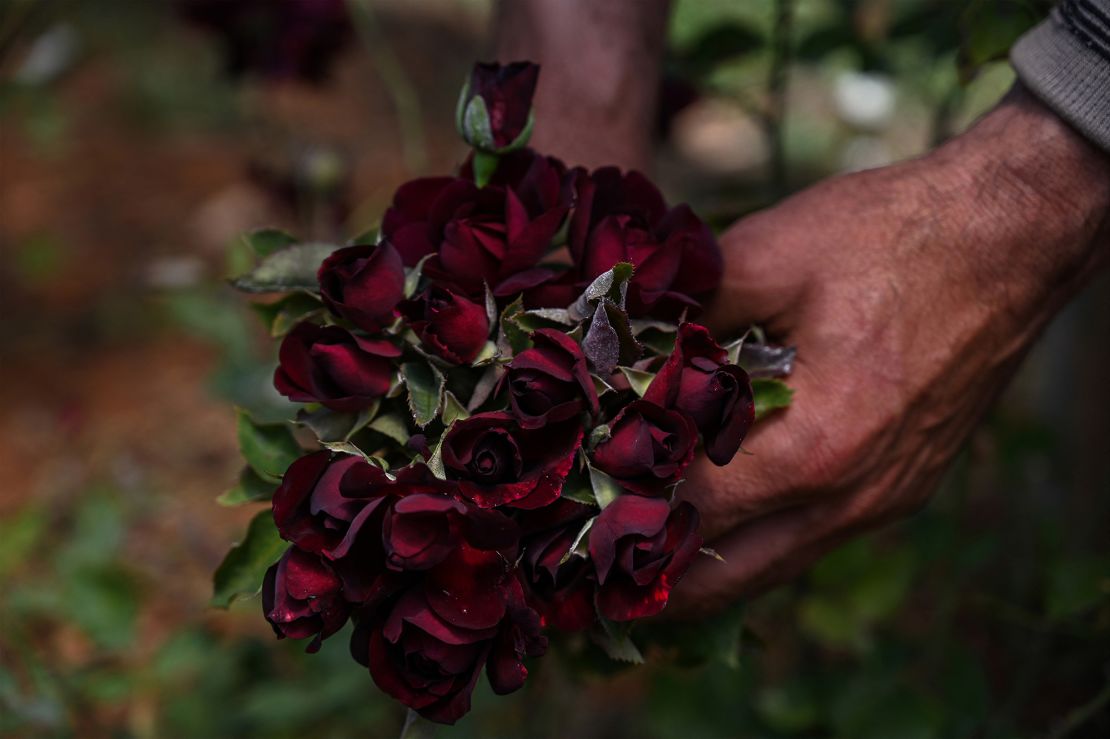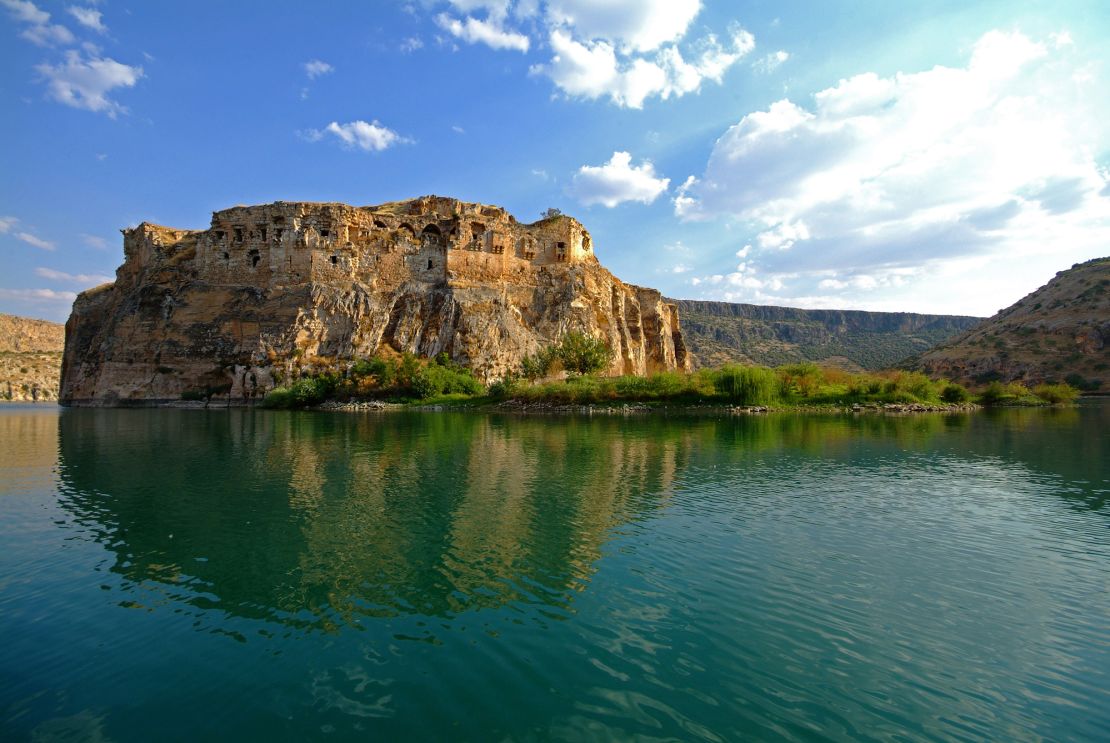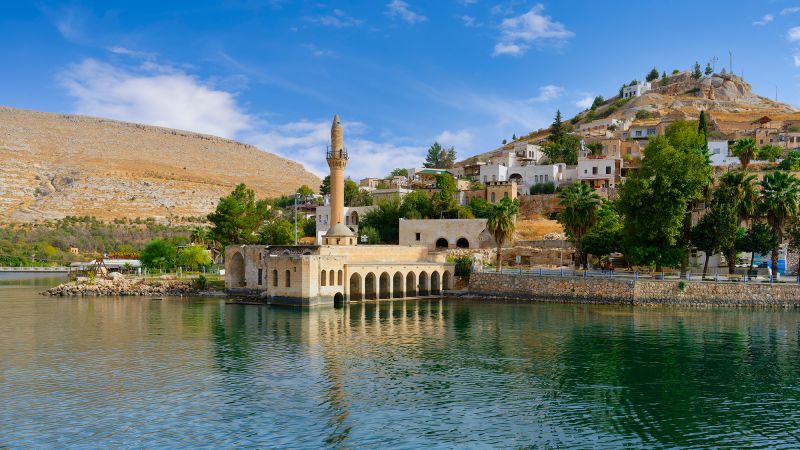Editor’s Note: This CNN Travel series may have adjacent ads by the country it highlights. CNN retains full editorial control over subject matter, reporting and frequency of the articles and videos, in compliance with our policy.
CNN
—
Over lunch of grilled shabout, or freshwater carp, at one of Halfeti’s floating restaurants, visitors might ponder what life was once like on the old streets, now abandoned several feet below the surface of the water.
Halfeti is one of several settlements in the Şanlıurfa Province of southeastern Turkey that lie on the bank of the Euphrates river, relatively near its source. In 2000, two such towns and 10 smaller villages were completely submerged by the river, following the construction of the 200-foot-high, 1.5 mile-wide Birecik Dam. Over 6,000 locals had to be relocated.
Around 40% of Halfeti — a town with a population of around 2,600 before the dam — was engulfed by the water. Many of its stone houses, shops and a significant part of its 19th-century Merkez Camii (Central Mosque) in the “old town” were lost. Some higher-elevation residences were spared, however, and many still live in the town above the water line today.

The Birecik dam was one of several built along the Euphrates and neighboring Tigris rivers in an attempt to develop the region of southeast Anatolia. The hydroelectric dam generates around 2,500 GWh (gigawatt hours) of electricity per year — enough to power almost one million Turkish households — and its 20-square-mile reservoir was planned to irrigate 70,000 hectares of farmland. Despite these apparent benefits, the Birecik dam was originally met with mixed responses from locals.
“Of course, it’s not easy, because many cemeteries, many houses stayed under the water,” says Erhan Yildirim, local researcher, historian and professional guide. “You cannot bring back the culture again; culture stays under the water.”
Muslum Karaman, a local boat operator, says that “people in Halfeti used to make a living from animal husbandry and agriculture” — the town was once known for its pistachio production.
“Now it has changed completely towards tourism,” he continues, adding that many have embraced this change by turning “their houses to boutique restaurants and cafeterias” in a bid to improve their overall quality of life.
Today, visitors flock to the “sunken city” to zip around the submerged architecture by boat, jet ski or even flyboard. Diving in Halfeti has also become a tourist favorite, popularized by Şahika Ercümen, a world record-holding female Turkish freediver, who dived in the town in 2020 to raise awareness about plastic pollution. “You feel history,” says Yildirim, as he describes the plethora of river fish species and an extensive network of ancient, natural limestone caves that lie just below the surface.

There’s life above the water as well as under, however. Halfeti is equally famous for its “black” roses, which are farmed around the town on the banks of the Euphrates river. Legend has it that Halfeti is the only place in the world where the flowers bloom truly black. “If you [grow] the black rose in any different location, they never give you the same color,” Yildirim claims.
Experts say that the color isn’t a pure black — it’s more of a very dark red. “I don’t think any so-called black flower is truly black,” says internationally acclaimed rose expert Michael Marriott. But he says that some very dark crimsons can appear black, especially at the bud stage, before they turn lighter as they blossom. Additionally, the darker the rose petal, the more likely it is to burn in the sun — meaning that in sunny climes, flowers can appear darker.
Guy Barter, chief horticulturist at the UK’s Royal Horticultural Society agrees. “Black roses and black flowers in general are seldom pure black but rather a very deep maroon or, as in this case, a very very dark red,” he says.
But while denizens of the internet have called Halfeti’s roses fakes, Barter adds a word of caution. “Deep maroon or dark red flowers are black enough for all practical purposes and only very picky people would carp about what are lovely and intriguing flowers,” he says.
It’s thought that the dark color is due to Halfeti’s unique soil conditions.
Although most roses are grafted onto common root stock, which prefers a neutral balance between acidity and alkalinity, Marriott says that it’s possible that Halfeti’s farmers might use the roses’ original roots, which could survive better in acidic conditions that darken the petals.
“It must be due to the climate conditions here,” says Birsen Aşağı, who works at the Floating Gift Shop, which sells black rose products. Locals like Aşağı offer a host of black rose-infused products, from ice creams to soaps and teas, while international brands have also capitalized on the flower’s allure. British perfumier Penhaligon’s has even named its black rose fragrance “Halfeti.”
Explaining the significance of the dark rose, Aşağı shares a local legend. The story begins with Adir, a renowned local architect, who was said to have built the city’s mosque. His granddaughter, Vartuhi, is said to have grown the most beautiful roses in the region. She fell in love with an orphaned boy from across the river named Firat but, tragically, their love was forbidden by her grandfather. Heartbroken, the pair leapt into the Euphrates together and drowned. According to legend, from that day onwards every single rose in Halfeti bloomed “black,” instead of red.
Yildirim tells a different tale, in which the black rose belonged to the Devil, who, upset by the murder of an innocent girl, declared that it would bloom only in the place where she died — forever acting as a symbol of sorrow, revenge and tragic love.

Visitors to Halfeti can also take an hour-long boat trip along the river to the nearby Rumkale Fortress — an ancient site that reflects the region’s complex and often turbulent history.
By boat, the fortress’ foundations can be seen dramatically overhanging the river.
They reportedly date back to the Byzantine empire in the 5th and 6th centuries CE, though some sources suggest that earlier structures may have existed on the site.
On foot, visitors can explore remnants of Armenian fortifications built during the 12th and 13th centuries, when Rumkale became the residence of the Catholicos, the spiritual leader of the Armenian Church. The fortress later fell to the Mamluks, a powerful Islamic knightly class, in 1292, before being taken over by the Ottoman empire over two centuries later.
Rumkale’s impressive architecture acts as a striking reminder of the whole region’s layered, complex and often bloody history — one which has left its mark on local religion and culture.
In 2013, Halfeti was recognized as part of the Cittaslow (“slow city”) network, honoring its commitment to a high quality of life through preserving its local culture and traditions. “People in Halfeti feel a deep connection to their town’s rich history,” says Yildirim.

